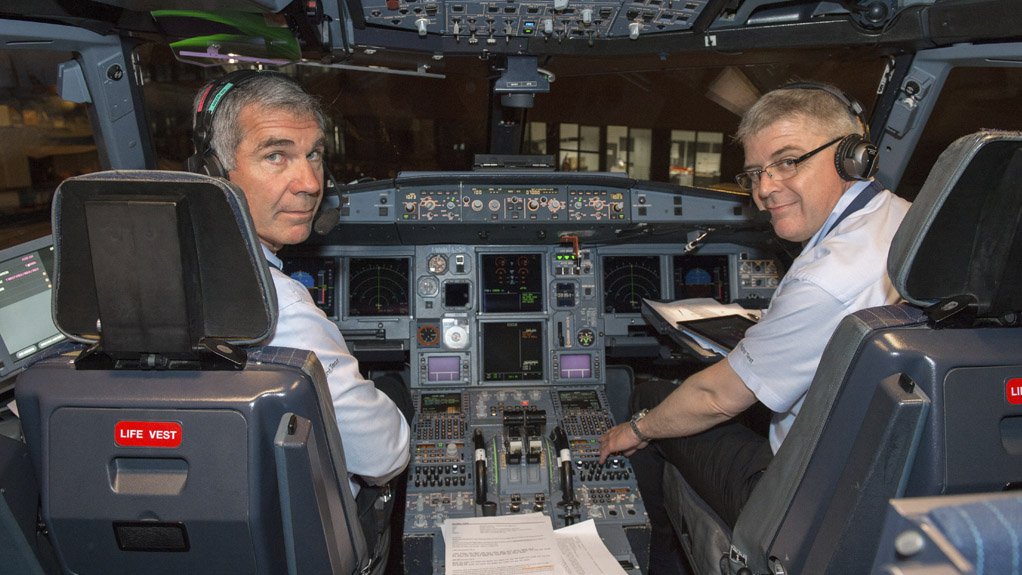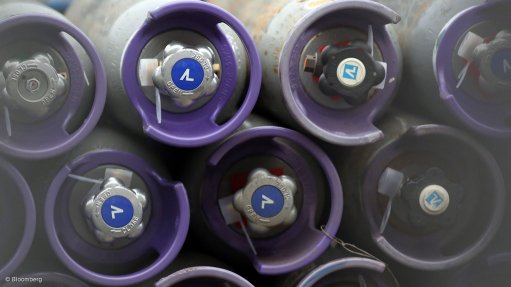Two pilots are safer than one – aviation expert


Airliners should always have a pilot and co-pilot: two unidentified Airbus test pilots on the flight deck of an A320
Photo by Airbus
Proposals that airlines could move to single-pilot operation, in place of the current system of pilot and co-pilot (more formally, Captain and First Officer), in order to reduce costs, are most ill-advised, affirmed Comair crew resource management specialist Michael Bowyer (himself a pilot) on Friday. He was addressing the third African Symposium on Human Factors and Aviation Safety in Boksburg, east of Johannesburg. (Comair is South Africa’s largest private-sector airline company, operating the British Airways in South Africa and Kulula low cost brands.)
He pointed out that redundancy was one of the principles used in aviation (and other high-risk industries) to ensure “defence in depth” and thereby reduce risk. All critical systems in aircraft are replicated, usually more than once, so that, should such a system fail, the aircraft can still be safely landed using the back-up system or systems.
However, redundancy in the aircraft’s systems also increases complexity, “makes the overall system more opaque” while leading to complacency and greater risk-taking by operators. As a result, another level of redundancy is required, provided by an independent system or person cross-checking all safety-critical information and actions.
The simplest way of providing such human redundancy is by having a co-pilot on the flight deck. In extreme cases, when a pilot becomes incapacitated for one reason or another, the co-pilot can take over and land the aircraft. More normally, having two pilots on the flight deck means that the one not flying the aircraft, can cross-check the actions, decisions and even intentions of the other, who is flying the aircraft.
While it is true that humans are more vulnerable than avionics systems to factors that can degrade performance, such as distraction, stress and fatigue, they are probably the most adaptable and flexible and valuable element of the “aviation system”. But flight crews should be teams, not just individuals rostered together.
Bowyer cited the case of the tragic loss of the Virgin Galactic rocket-powered SpaceShipTwo space-plane at the end of October, 2014, which killed the co-pilot and injured the pilot. For reasons that can never be determined, the co-pilot unlocked the craft’s airbraking system too soon, generating unbearable stresses on SpaceShipTwo and causing it to break up in flight.
The flight crew that day, although highly experienced test pilots, were not a team that regularly worked together. This undermined their mutual coordination. He quoted a statement made by US National Transportation Safety Board chairman Christopher Hart, who, regarding this accident, said “[t]he assumption was these highly trained test pilots would not make mistakes in those areas, but, truth be told, humans are humans, and even the best-trained human on their best day can make mistakes”.
Bowyer then cited the International Civil Aviation Organisation’s Human Factors Training Manual. This states that the advantage of teamwork over an assemblage of highly skilled individuals is that teamwork ensures crew coordination. In turn, crew coordination increases safety by increasing efficiency through using all resources in an organised manner and by increasing redundancy, improving the detection and correction of individual mistakes.
It is also important that the co-pilots in airliners have sufficient experience. “Placing pilots with very low experience levels in the right [co-pilot] seat of airliners may be commercially beneficial but what level of redundancy are they able to provide,” he queried.
“The need is to develop a flexible self-correcting team to prevent individual errors from becoming accidents,” he pointed out. “Pilots are also in the unenviable position of being the last line of defence – of having to detect and correct all the errors due to other inputs whether by the regulator, manufacturer, ATC [air traffic control], etc., providing further levels of redundancy. A pilot with an error rate of 1 in a 1 000 monitored by another pilot with an error rate of 1 in a 1 000 produces an overall error rate of 1 in a million. Currently scheduled jet airliners are operating at a rate of about one accident per 2-million departures.”
Comments
Press Office
Announcements
What's On
Subscribe to improve your user experience...
Option 1 (equivalent of R125 a month):
Receive a weekly copy of Creamer Media's Engineering News & Mining Weekly magazine
(print copy for those in South Africa and e-magazine for those outside of South Africa)
Receive daily email newsletters
Access to full search results
Access archive of magazine back copies
Access to Projects in Progress
Access to ONE Research Report of your choice in PDF format
Option 2 (equivalent of R375 a month):
All benefits from Option 1
PLUS
Access to Creamer Media's Research Channel Africa for ALL Research Reports, in PDF format, on various industrial and mining sectors
including Electricity; Water; Energy Transition; Hydrogen; Roads, Rail and Ports; Coal; Gold; Platinum; Battery Metals; etc.
Already a subscriber?
Forgotten your password?
Receive weekly copy of Creamer Media's Engineering News & Mining Weekly magazine (print copy for those in South Africa and e-magazine for those outside of South Africa)
➕
Recieve daily email newsletters
➕
Access to full search results
➕
Access archive of magazine back copies
➕
Access to Projects in Progress
➕
Access to ONE Research Report of your choice in PDF format
RESEARCH CHANNEL AFRICA
R4500 (equivalent of R375 a month)
SUBSCRIBEAll benefits from Option 1
➕
Access to Creamer Media's Research Channel Africa for ALL Research Reports on various industrial and mining sectors, in PDF format, including on:
Electricity
➕
Water
➕
Energy Transition
➕
Hydrogen
➕
Roads, Rail and Ports
➕
Coal
➕
Gold
➕
Platinum
➕
Battery Metals
➕
etc.
Receive all benefits from Option 1 or Option 2 delivered to numerous people at your company
➕
Multiple User names and Passwords for simultaneous log-ins
➕
Intranet integration access to all in your organisation



















